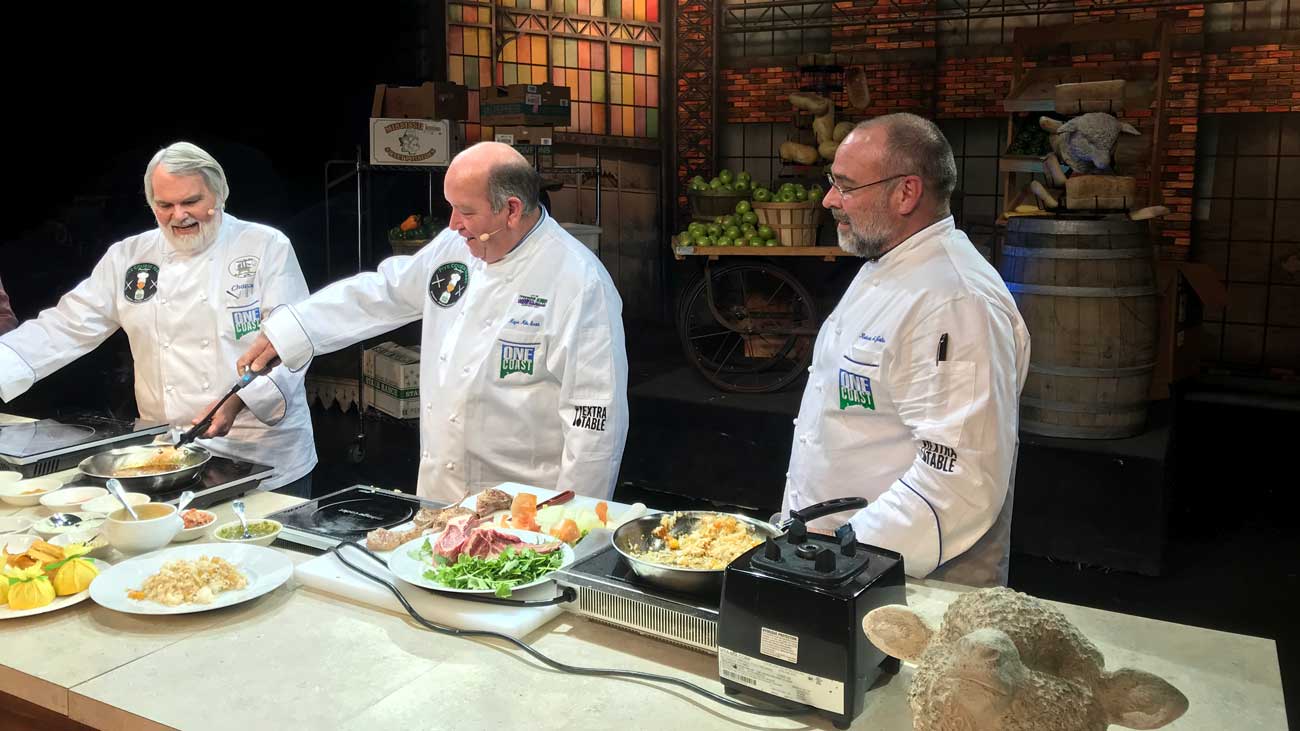I have been dreaming of ham, lately.
Just this past weekend I was visiting my brother in Madison, Mississippi and he took me to breakfast at a restaurant called The Gathering in Livingston, just down the road from his house. I ordered the standard eggs, grits, bacon, and biscuit breakfast. After placing my order I noticed that they also offered country ham. As an afterthought, I told the lady at the register, “Let me add an order of country ham to my breakfast.” I am glad I did.
The country ham served at The Gathering in Livingston is some of the best country ham I have eaten in several years. It was cooked properly and was as juicy as a country ham can be. Country hams have been cured for a long time and most of the moisture has been removed. Many restaurants deplete what little moisture remains by overcooking it. Not so at The Gathering. The country ham was so good I pulled what my restaurant managers call “a St. John,” and ordered another round of country ham for the table. The second round was as good as the first.
In December of 2011 I spent a month in Spain with my wife, 14-year old daughter and 10-year old son. I connected with that country on may levels. The history is storied, the culture is rich and the uniqueness and diversity of the various regions is rare. Of the big three European culinary countries— Italy, Spain, and France— Spain might be the most diverse.
Spain is the second largest consumer of seafood in the world, just behind Japan. For a guy who grew up 70 miles from the Gulf of Mexico, I could relate to the dedication and passion Spaniards and Catalans show towards the fruits of the sea.
Spain, with its more than 300,000,000 olive trees, is Europe’s largest olive oil producer. That holds some sway in my book, too. The orange groves north of Valencia rival any I have seen in Florida or California. But of all of the culinary delights in Spain, nothing impresses more than their ham.
The term “world class” is overused and has been watered down over the years. Though I feel safe in the statement that the hams of Spain are world class and unmatched in their supremacy to any others I have eaten. Anywhere. Period.
In my 2011 food journal I wrote, “There are many reasons to love Spain. The land is diverse. The people are caring and friendly. The architecture is impressive, and the food is inspirational.” The source of most of that inspiration came on a day trip my son and I made on December 5th of 2011. An expatriated American college administrator who lives in Seville, Doug Ingless, to my son and me on an excursion into the Spanish countryside to follow the five year process of the black pig foraging for acorns under cork trees and holm oaks to the town of Jabugo, which is a municipality so dedicated to ham, the city square is named for it.
Jabugo is ground zero for the world’s ham lovers. If you are a ham disciple, this is your Mecca. We toured a ham producer, Montesierra, where we viewed over 100,000 hams curing in a warehouse. The finest of those hams can cost as much as $1,000.00 when purchasing from a gourmet supplier to be sent to America.
I have 30 minutes of video footage I shot in the facility. It’s footage that I have never viewed, but pulled up this morning to help with the research of this column. Unfortunately the sound doesn’t work. My son and I spent 30 minutes with the man who tends to over 100,000 hams in the world’s greatest curing facility, who imparted volumes of wisdom and knowledge on us that day, and all I have to show for it is the video footage— which is impressive on its own if you can imagine that many hams hanging in one facility. The aroma alone was enough to make one fall in love with Jamon Iberico Jabugo for several lifetimes.
I have footage of the pigs foraging under the trees, too. No sound on those either.
In my lifetime I feel I have eaten a lot of the “world’s best” items. The breads in Paris are world class. The olive oil in Tuscany is the finest I have ever tried. The pizza at a tiny restaurant called L’Archibugio in the medieval town of Barberino Val d’Elsa is, to my mind— and despite reports of Naples area pies to the contrary— the finest on the planet. The oysters from our supplier that come from the Gulf of Mexico are better than any on earth. All of those opinions are mine, and are subjective. Though I think 99% of the world agrees that the finest hams on the planet come from the Iberian Peninsula.
Almost every restaurant and tapas bar has a ham on a stand near the bar where they shave razor thin slices of Jamon Iberico for a sampling or entrée. One could eat ham at every meal in Spain and not get tired of it.
In the end, ham rules the day. It is better than roast beef and it is way better than turkey. When taken to its greatest potential it can be otherworldly.
Southerners live in the land of the country ham, not Jamon Iberico, and I don’t intend to imply that there is a similarity. The only similarity is that each comes from a pig. Though Spain is a long way off and country ham is way, way cheaper.
The next time you are eating something and loving it, pull a “St. John” and place an order for another round of whatever it may be. If it is Jamon Iberico from Jabugo, Spain or country ham from The Gathering in Livingston, Mississippi, your dining companions will be forever in your debt.
Orange Country Ham
2 Tbl Unsalted Butter
1 1/2 lbs. Country Ham, sliced 1/8-1/4” thick
1/4 cup Orange Juice, freshly squeezed
2 Tbl Orange Marmalade
1/4 cup Pure Maple Syrup
1 1/2 tsp Black Pepper, freshly ground
Place a large heavy duty skillet over medium-high heat. Melt half of the butter and just as it begins to brown, place the ham slices in the skillet. Brown each side and place ham on a baking sheet. Repeat this process to brown the remaining ham.
Lower the heat and place the orange juice, marmalade and maple syrup in the ham skillet. Cook for 4-5 minutes, stirring often to prevent burning. Add the ham back into the skillet along with the black pepper. Use a pair of tongs to move the ham and coat each slice with the glaze. When the ham is coated and hot, remove from the heat and serve immediately.
Yield: 6-8 servings



